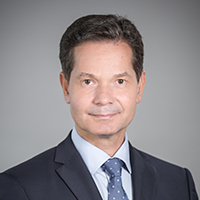Executive summary
- Synchronised and sustained global growth remains in place, despite political uncertainties
- The ECB should follow the Fed in adopting a more neutral policy stance in 2H2017
- Headline inflation is nearing 2% in major regions of the world though it should stabilise in the Eurozone in the months ahead
- US inflation risks remain tilted to the upside driven by wage growth and the potential for fiscal easing
- Hard currency EM debt compensates investors relatively well compared to other, richly valued DM fixed income alternatives
- Eurozone policy normalisation should bring increased interest rate volatility to the single currency area
- Elevated global equity valuations are driven primarily by historically high valuations in the US
- Non-US equities in Japan, EM and, to a lesser extent, Europe present better relative opportunities than US equities
- Eurozone markets currently underprice the prospect of a populist outcome in the French elections in coming weeks
- Alternative strategies including risk premia and market neutral strategies are increasingly attractive given elevated valuations across equities and fixed income
US growth on trend, waiting for budgetary reforms
US growth should remain on a 2%-2.5% trend thanks to sustained consumption and high levels of business confidence in both manufacturing and service sectors. Fundamentals remain positive for consumers, as the economy is close to full employment and the housing market looks healthy. The positive surge in business sentiment over the past months should lead to a rebound in corporate investment in the coming quarters.
Budgetary policy is still expected to deliver reforms that could push activity higher. Nevertheless, despite the Republican majority in Congress and a new President in the White House, no agreement has been reached on the reform of Obamacare and decisions on fiscal measures have been delayed. The macro impact of lower taxes on household and corporates might only be seen in 2018. As US growth seems already close to its potential, the risks associated with a strong fiscal stimulus are on the inflation side, with rising wage pressures and expanding fiscal and trade deficits. If the budgetary boost comes in lower than expected, US growth should remain on a 2%-2.5% trend, and overheating risks should be limited. The Fed should therefore continue gradually to normalise its policy, with two more rate hikes expected over the next quarters.
Emerging countries: exports and consumption as main drivers
Emerging countries offer a relatively stable outlook for the next quarters, despite fears of rising protectionism among developed countries. Growth has stabilised thanks to consumption and accommodative economic policy in past months. Moreover, momentum has turned positive in the manufacturing sector, and exports have performed better, particularly in Asia.
Growth in China should stabilise around 6.5%, thanks to a strong consumer economy and global investment. After the Xi Jinping-Trump meeting, fears of a ‘cold war’ on trade and currency between the two major economies have reduced. In the meantime, China continues to tighten its monetary policy, aiming to clean up the banking sector, prevent any further bubble in the property market and stabilise capital flows. Among emerging markets, Asia continues to offer the most attractive outlook, thanks to China and India. The economic situation in Brazil and Russia has improved slightly but commodity price volatility and political instability act to slow down the exit from recession. Moreover, the latest geopolitical developments in the Middle East have reduced the probability of seeing any easing of sanctions against Russia.

Michaël Lok
Group CIO and Co-CEO Asset Management

Norman Villamin
CIO Private Banking

Patrice Gautry
Chief Economist

